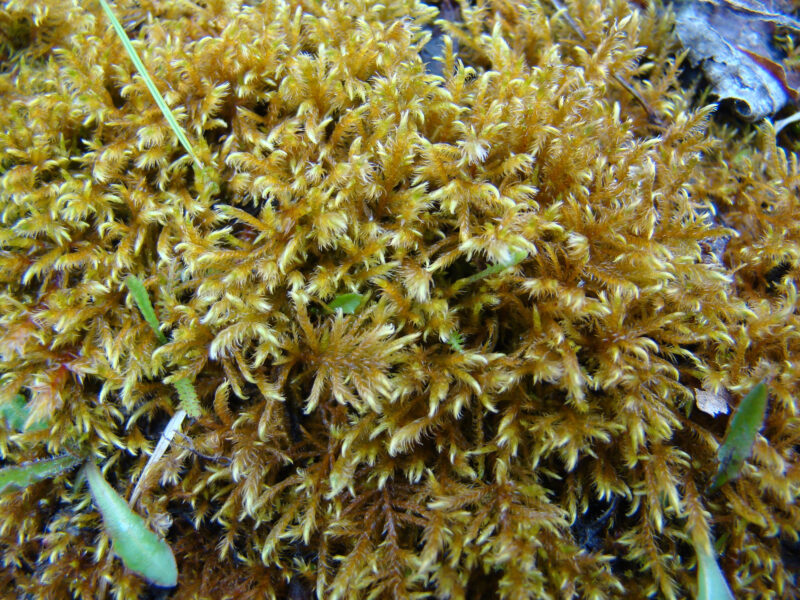Identification notes
D. aduncus is an extremely variable moss, its growth-form adapting to the demands of its environment. Consequently, there are many confusing morphs, some straight-leaved, others more typically hook-leaved, some terrestrial and others feathery-looking and fully submerged. Its habitat often provides clues as to its identity – any large ‘dreppy jobbie’ in base-rich eutrophic water is likely to be this species.
If you suspect this species, check the leaf base on the stem with a hand-lens – can you see auricles? Do they have inflated, often hyaline alar cells? If so, you can rule out the likes of Leptodictyum riparium, which often inhabits the same eutrophic pools and marshy places and has similar-looking leaves with long, narrow acumens.
In places where the water table fluctuates greatly, such as low-lying wet ground in coastal swamp, D. aduncus may also resemble a range of other pleurocarps and have leaves of different size and shape. However, even in these forms, you will often see more typical-looking, slightly hooked leaves at the tip of the shoots, where they are young and little-modified.
Read the Field Guide account











